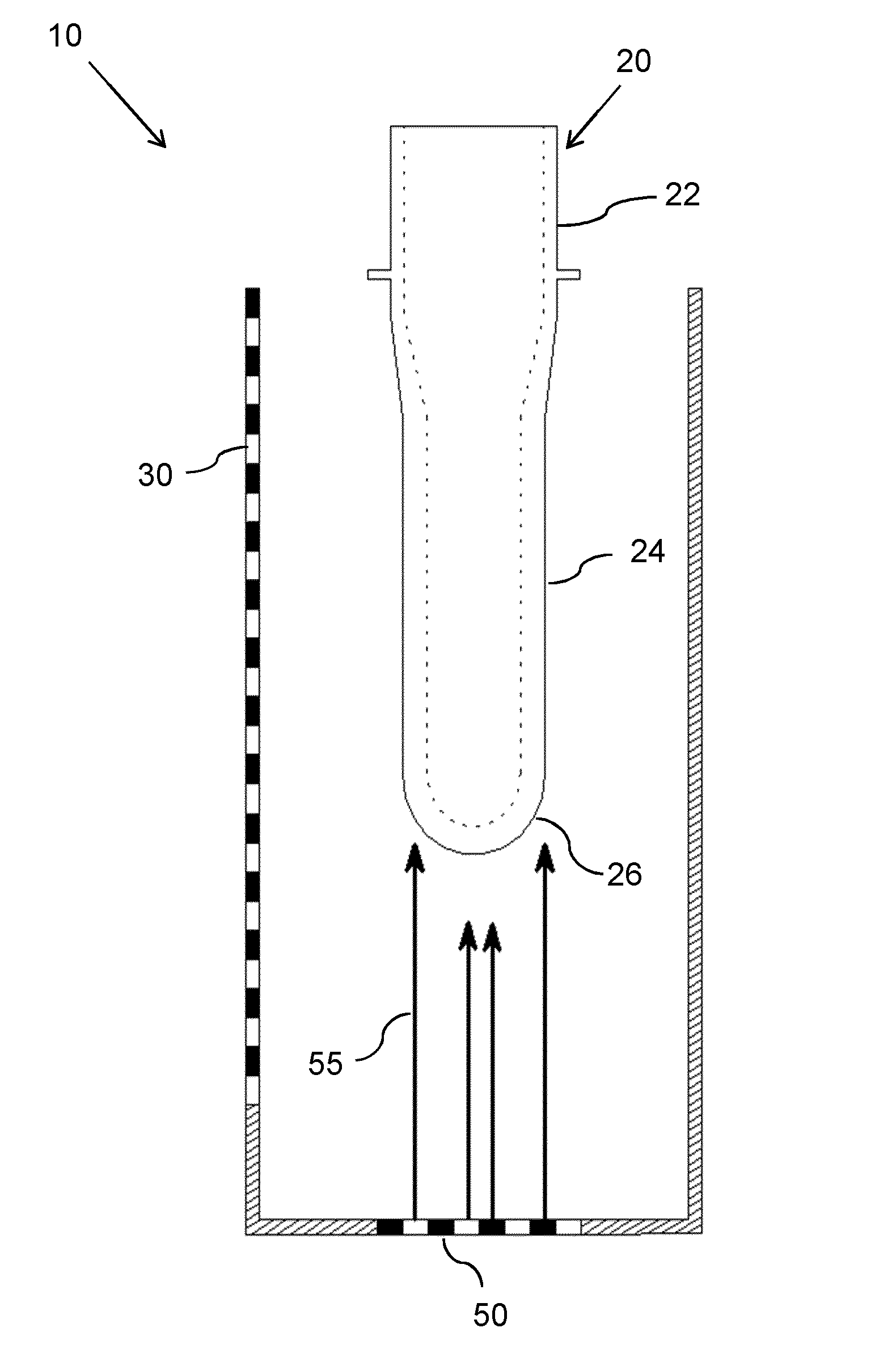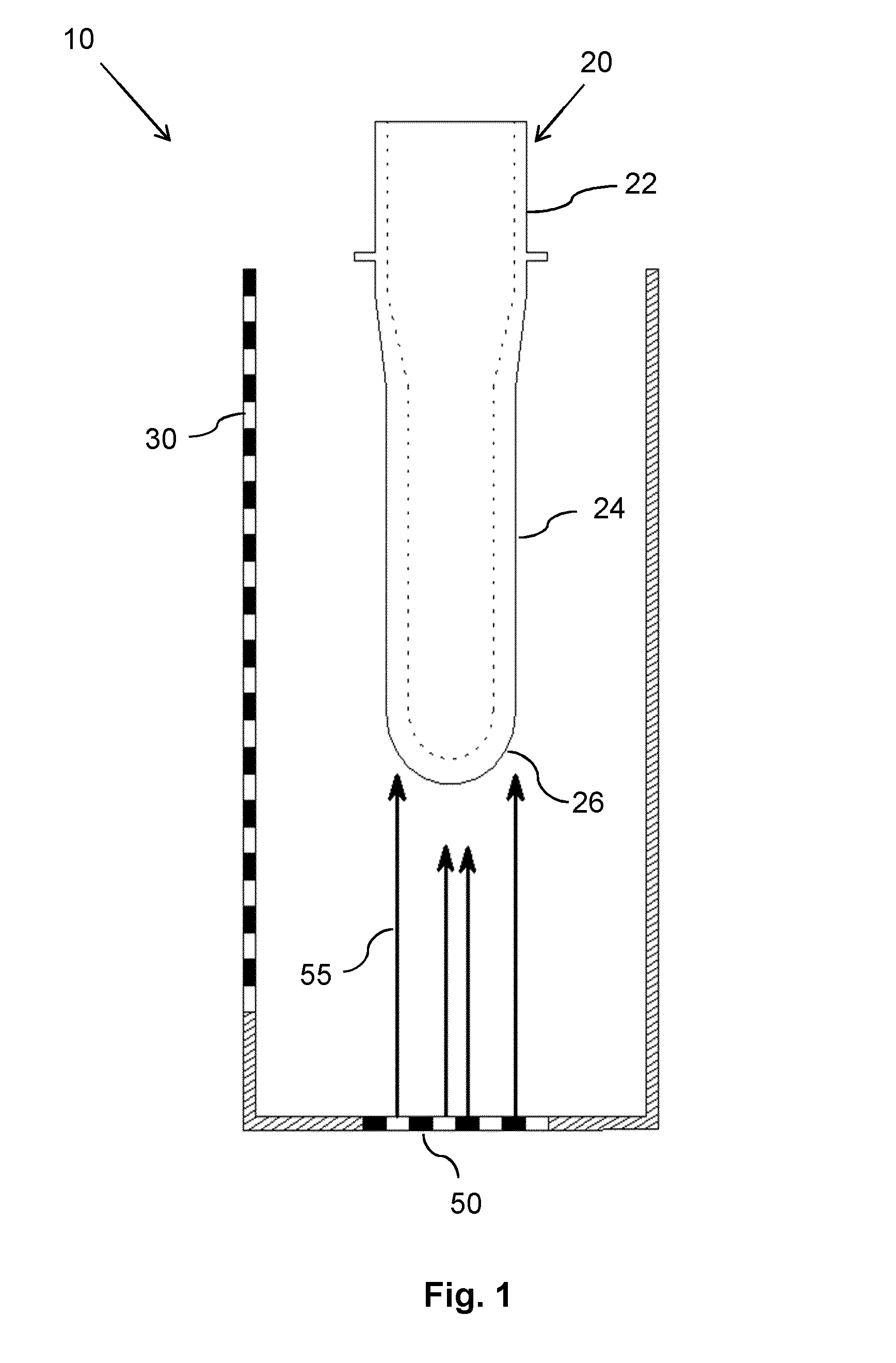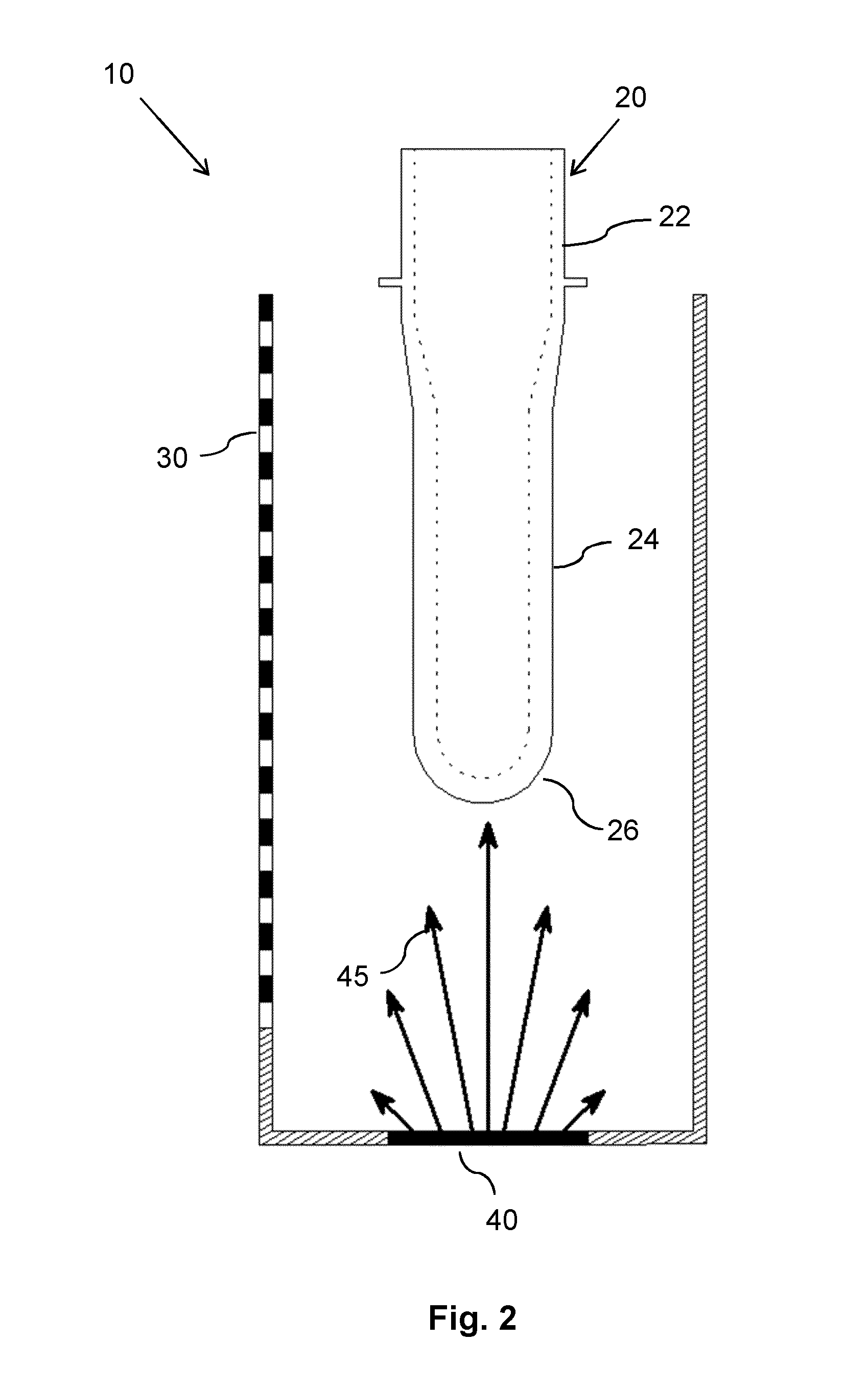Heating system for pet-preforms
a heating system and pet-shaped technology, applied in the field of heating systems for pet-shaped forms, can solve the problem of only having limited options for adapting the heating process, and achieve the effects of improving the heating of the bottom, reducing the radiative energy absorbed, and high resolution
- Summary
- Abstract
- Description
- Claims
- Application Information
AI Technical Summary
Benefits of technology
Problems solved by technology
Method used
Image
Examples
second embodiment
[0043]FIGS. 1 and 2 depict schematic sectional views of a first and a heating system 10 according to the present invention. The heating system 10 for heating a preform 20 comprises a laser radiation generation unit 30 for heating the sidewall of the preform 24. The preform is hold by means of a holding device (not shown). Two possible approaches are conceivable for directly heating the bottom of the preform, either a conventional halogen lamp 40 providing non laser light 45 depicted in FIG. 2 or some type of high-power laser array 50, like the VCSEL-arrays providing laser light 55 employed in the rest of the furnace or heating system 10 as depicted in FIG. 1. While the lamp-based solution might be simpler and less costly, it carries with it all the disadvantages as discussed above. However, since only a limited amount of additional energy is required, these disadvantages like minor efficiency and unintended heating of the environment and thus the heating system 10 might be acceptabl...
fourth embodiment
[0045]FIGS. 3 and 4 show schematic sectional views of a third and a heating system according to the present invention.
[0046]If no additional heat sources shall be employed, in many cases it will be possible to make use of the existing high-power VCSEL-arrays of the laser radiation generation unit 30 to directly heat the bottom of the preform 26. Typically, a bottle blowing furnace and thus the heating system 10 will have a laser module installed that has a larger height than necessary for most of the used preforms 20. In this way, the furnace has the flexibility to heat a wide range of preform heights. Thus, if a preform 20 shorter than the maximum module length is heated, the remaining lower laser zones can be employed to directly heat the preform bottom.
[0047]This most conveniently can be achieved by a reflecting device as a flat redirecting mirror 61. This mirror 61 should be arranged at an angle close to 45° to the walls of the furnace. By proper selection of the additional lase...
sixth embodiment
[0048]FIGS. 5 and 6 show schematic sectional views of a fifth and a heating system according to the present invention.
[0049]As a variant of the concept shown in FIGS. 3 and 4, also a parabolic mirror 63 may be employed. Such an arrangement would focus the laser light 55 from the additional zones, e.g. onto the center of the half-spherical bottom of the preform 26. In this way, less inhomogeneities due to refraction in the bottom of the preform 26 can be expected. A minor disadvantage of this concept may be that only half of the bottom of the preform 26 can be irradiated this way. However, since the preforms 20 are constantly rotated around their long axis during their way through the heating system 10, this disadvantage should vanish over the course of the full heating process. In another embodiment shown in FIG. 6, the parabolic mirror 63 (for the part of the preform 20 farther away from the irradiating laser unit 30) could be combined with a flat mirror 61 for the preform part clo...
PUM
| Property | Measurement | Unit |
|---|---|---|
| recrystallization temperature | aaaaa | aaaaa |
| temperature | aaaaa | aaaaa |
| angle | aaaaa | aaaaa |
Abstract
Description
Claims
Application Information
 Login to View More
Login to View More - R&D
- Intellectual Property
- Life Sciences
- Materials
- Tech Scout
- Unparalleled Data Quality
- Higher Quality Content
- 60% Fewer Hallucinations
Browse by: Latest US Patents, China's latest patents, Technical Efficacy Thesaurus, Application Domain, Technology Topic, Popular Technical Reports.
© 2025 PatSnap. All rights reserved.Legal|Privacy policy|Modern Slavery Act Transparency Statement|Sitemap|About US| Contact US: help@patsnap.com



